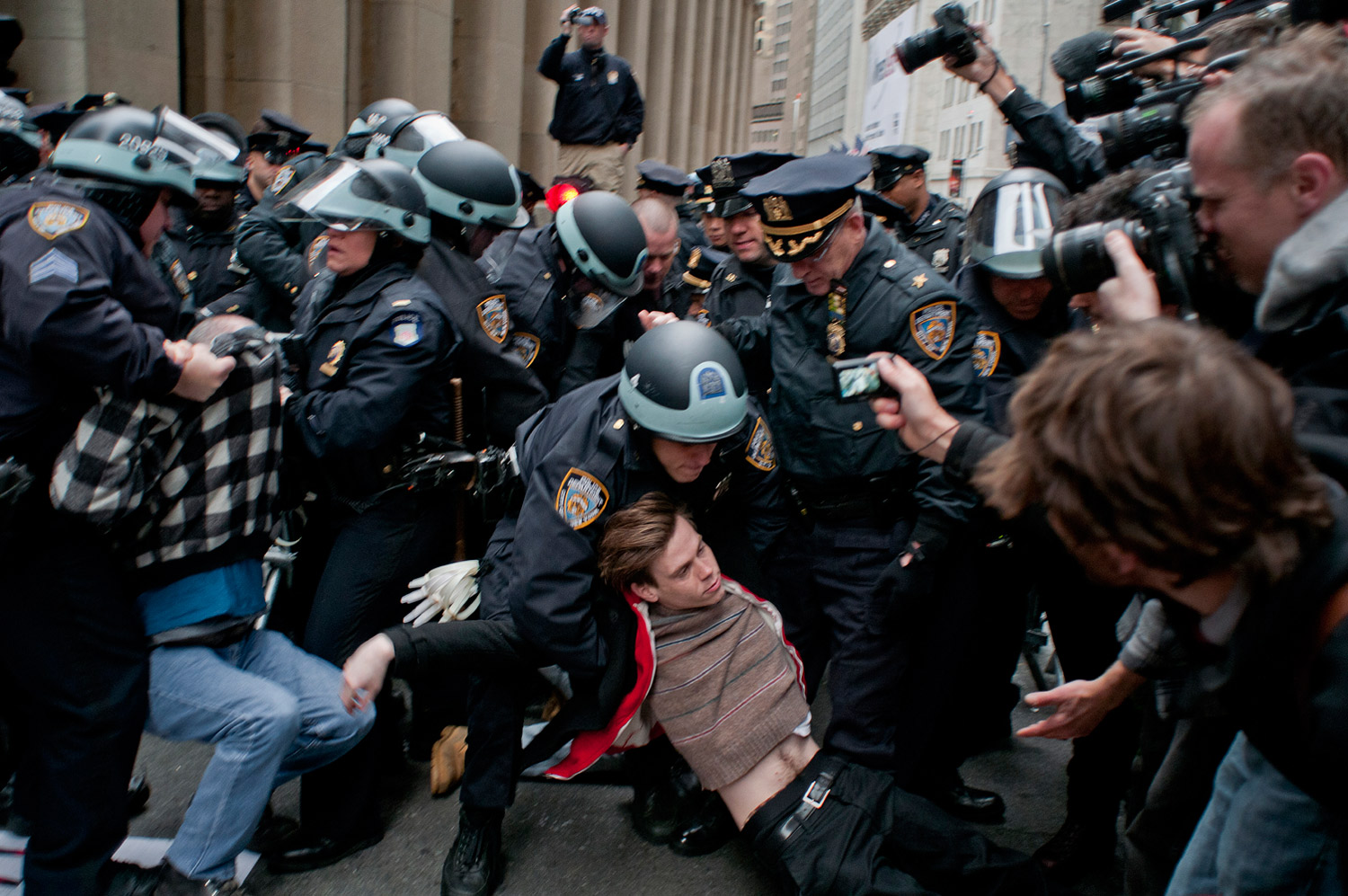
May 1 marks International Worker’s Day, and this year Occupy Wall Street and other OWS-friendly groups are planning a day of action with events in cities around the United States. The plans cover a broad spectrum of protest activities, but one thing is sure to be shared by all: wherever there’s a protest, someone is going to try to take a picture of it; New York City’s South Street Seaport Museum, located near Wall Street, is currently exhibiting photographs, including the one seen here, of Occupy protests. But some of those photographers will, if the past is any indication, get arrested.
According to Jay Stanley, who runs the American Civil Liberties Union (ACLU) project on photographers’ rights, the rising number of arrests is not in photographers’ imaginations: hostility between photographers and the police actually is becoming more common, even though American law guarantees the right to photograph in a public place. Occupy protests have been a consistent source of that tension.
Photojournalists, particularly freelancers, can encounter an extra layer of scrutiny. Mickey Osterreicher, a lawyer on the National Press Photographers Association (NPPA) advocacy committee, says that professionals with obviously high-quality equipment can be targeted, even though the press legally has as much of a right to be in and photograph public places as everyone else does. Especially since the 2011 federal case of Glik v. Cunniffe, in which the court found that a Boston man was not guilty under anti-wiretapping statutes for having videotaped an arrest with his cellphone, the right to photograph the police has been firmly established. Although whether or not the police can look at one’s photos is in the process of being tested in court, police cannot seize a camera without reason. But those legal rights don’t necessarily translate to smooth experiences on the ground.
Beyond knowledge of the law and professional conduct—which means not breaking any other laws, such as trespassing statutes—there’s not much a photographer can do in advance to prevent that kind of hassle. “If you’re arguing with somebody who’s got a badge and a gun, usually you’re going to lose that argument right then,” says Osterreicher, who notes that a photographer’s best recourse usually comes later, in court—which is why it’s helpful to continue to record audio and video, if possible, to preserve a record of one’s interaction with the police.
There are several resources available for photographers who encounter trouble with the law. Here are just a few:
Osterreicher and the NPPA are working with law enforcement agencies to educate officers about photographers’ rights, with particular attention on avoiding conflict at this year’s upcoming political party conventions. Stanley is also hopeful that, with education, the relationship between police officers and photographers can become a productive one. “I’m optimistic that professional police officers around the country will come to understand that this is a necessary check and balance, and a necessary freedom in a free society,” he says.
The Occupy Wall Street photojournalism exhibition is on view at the South Street Seaport Museum in New York City through July 8.

More Must-Reads from TIME
- Cybersecurity Experts Are Sounding the Alarm on DOGE
- Meet the 2025 Women of the Year
- The Harsh Truth About Disability Inclusion
- Why Do More Young Adults Have Cancer?
- Colman Domingo Leads With Radical Love
- How to Get Better at Doing Things Alone
- Michelle Zauner Stares Down the Darkness
Write to Lily Rothman at lily.rothman@time.com



